-
26.01.2015
AURORA SURPRISE PROMPTS ROCKET LAUNCH: A geomagnetic storm erupted during the early hours of Jan. 26th, sparking a surprise display of bright auroras around the Arctic Circle. Scientists took the opportunity to launch four sounding rockets from Alaska's Poker Flat Research Range to study the effect of solar storms on the upper atmosphere. Photographer Jamie Adkins created this composite shot of the rocket salvo:
.
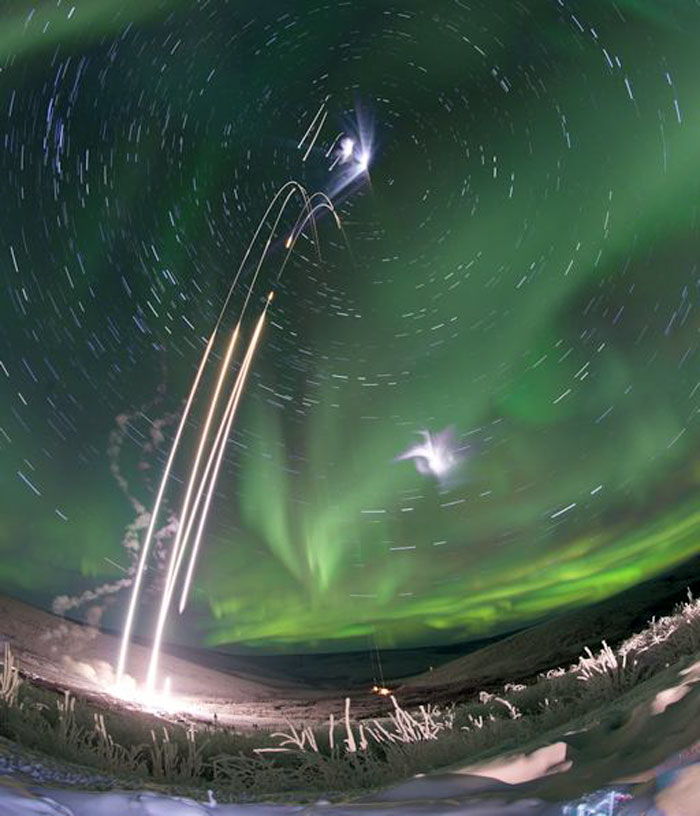
-
Richard Collins, a principal investigator from the Geophysical Institute at the University of Alaska, Fairbanks, explains the purpose of the launches: "Recent solar storms have resulted in major changes to the composition of the upper atmosphere above 49 miles (80 kilometers), where enhancements in nitrogen compounds have been found. These compounds can be transported into the middle atmosphere where they can contribute to ozone destruction."
But do these ozone-destroying compounds actually make it down to the ozone layer? "Meteorological conditions do not always allow such transport to occur," he says. Instruments on the rockets were designed to investigate those conditions--specifically, how turbulence and diffusion might cause compounds to mix downward in the atmosphere.
Two of the rockets released trails of trimethyl aluminum (TMA) vapor, creating whitish clouds that were photographed from several ground stations. Miguel Larsen, a principal investigator from Clemson University in South Carolina says "this will help us trace turbulence in the atmosphere/space transition region, and thus, the way atmospheric properties are mixed vertically."
.
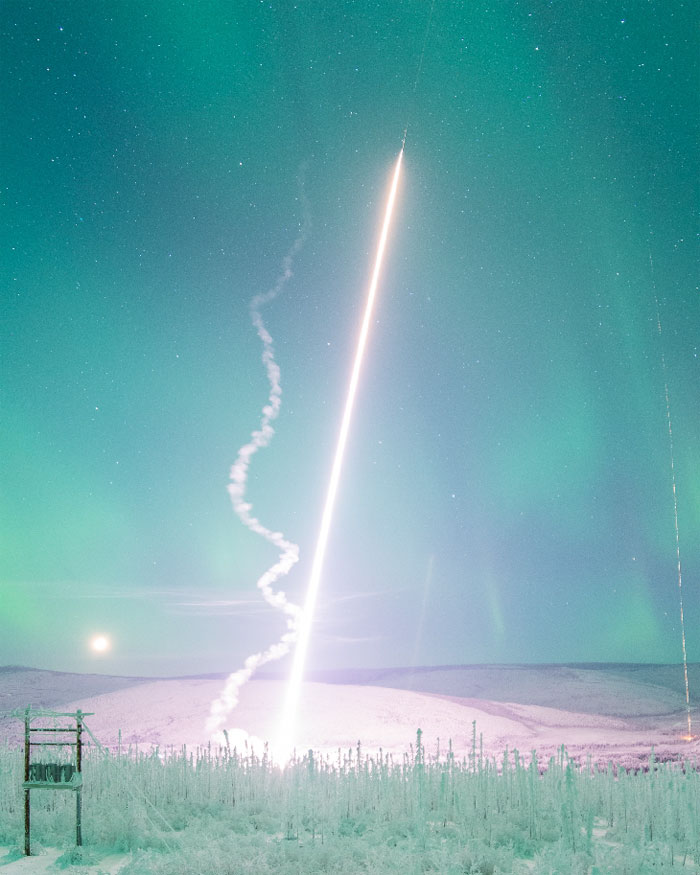
-
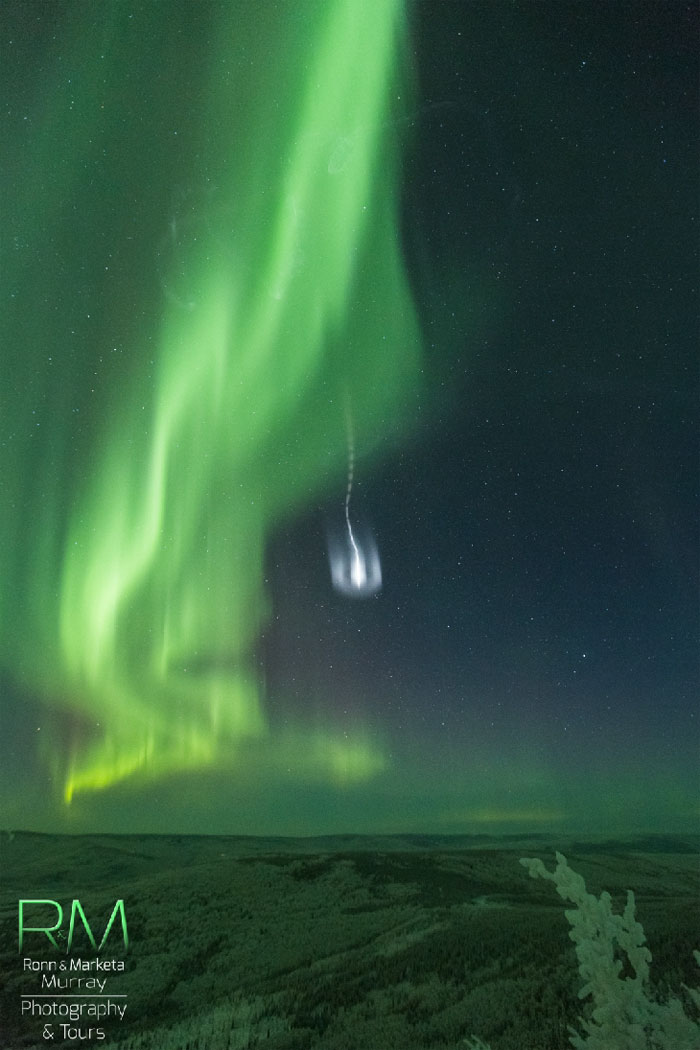
Quelle: Spaceweather
-
Update: 27.01.2015
-
Four rockets successfully launched at Poker Flat
FAIRBANKS - Researchers at the Poker Flat Research Range sent four rockets into an aurora filled sky early this morning.
The four launches were successful and appear to have produced data that will help researchers understand turbulent air currents in the upper atmosphere, said Sue Mitchell a spokeswoman for the University of Alaska Fairbanks Geophysical Institute.
Mitchell was at the Steese Highway rocket range until about 2 a.m., she said.
"They were getting the data and everything seemed to be successful," she said.
Two teams collaborated to launch the four rockets. One team was led by Rich Collins from the University of Alaska Fairbanks, the other by Miguel Larsen at Clemson University. Larsen's rockets released a gas called trimethyl aluminum, which glows green when it reacts with oxygen. His team will use images of the gas dispersal to better understand turbulence.
Researchers have been in position to launch since Jan. 13, waiting each night for the clear weather they needed for their experiments. Monday's opening was just in time; their launch window closed Tuesday.
A fifth rocket did not launch Monday. That launch is a separate aurora research project operated by a Utah State team. The launch was delayed, someone ironically, because the aurora was too strong Monday morning, Mitchell said. The rocket is expected to measure the aurora above Kaktovik, on the North Slope, and the strongest aurora was farther south Monday morning. The Utah State rocket may launch later this week.
.
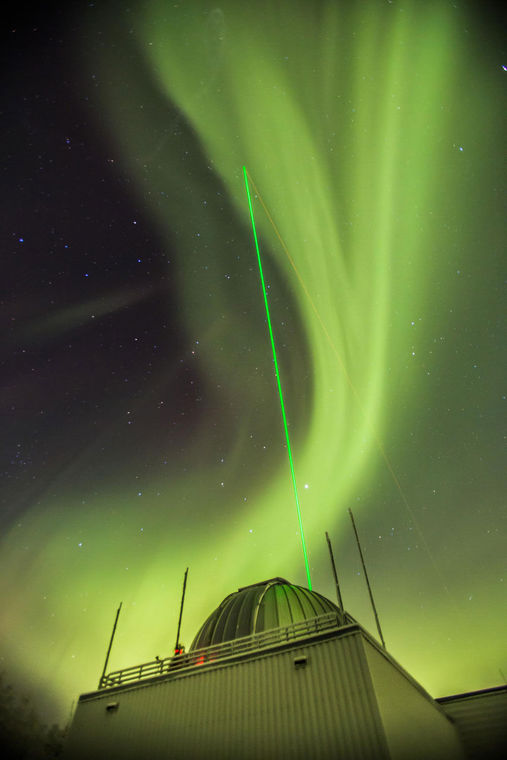
A rocket is successfully launched into an aurora filled sky early Monday morning at Poker Flat Research Range northeast of Fairbanks. The rocket, one of four, is designed to study turbulence in the atmosphere. Photo courtesy Todd Paris, University of Alaska Fairbanks
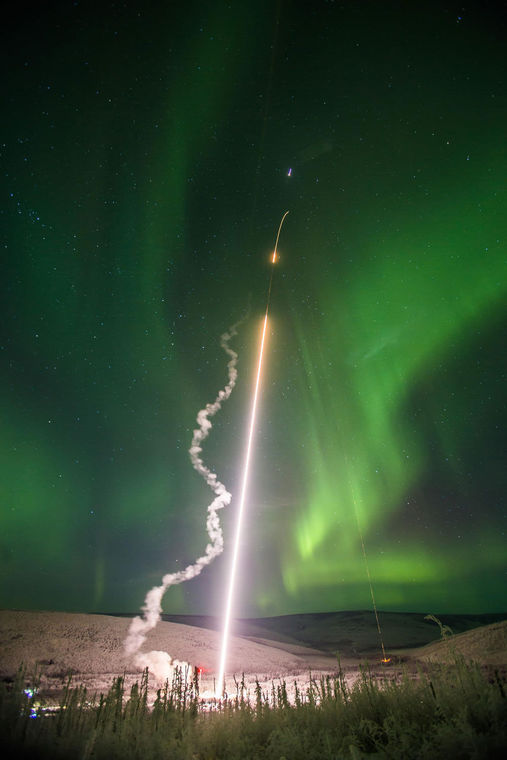
Quelle: newsminer
4837 Views
